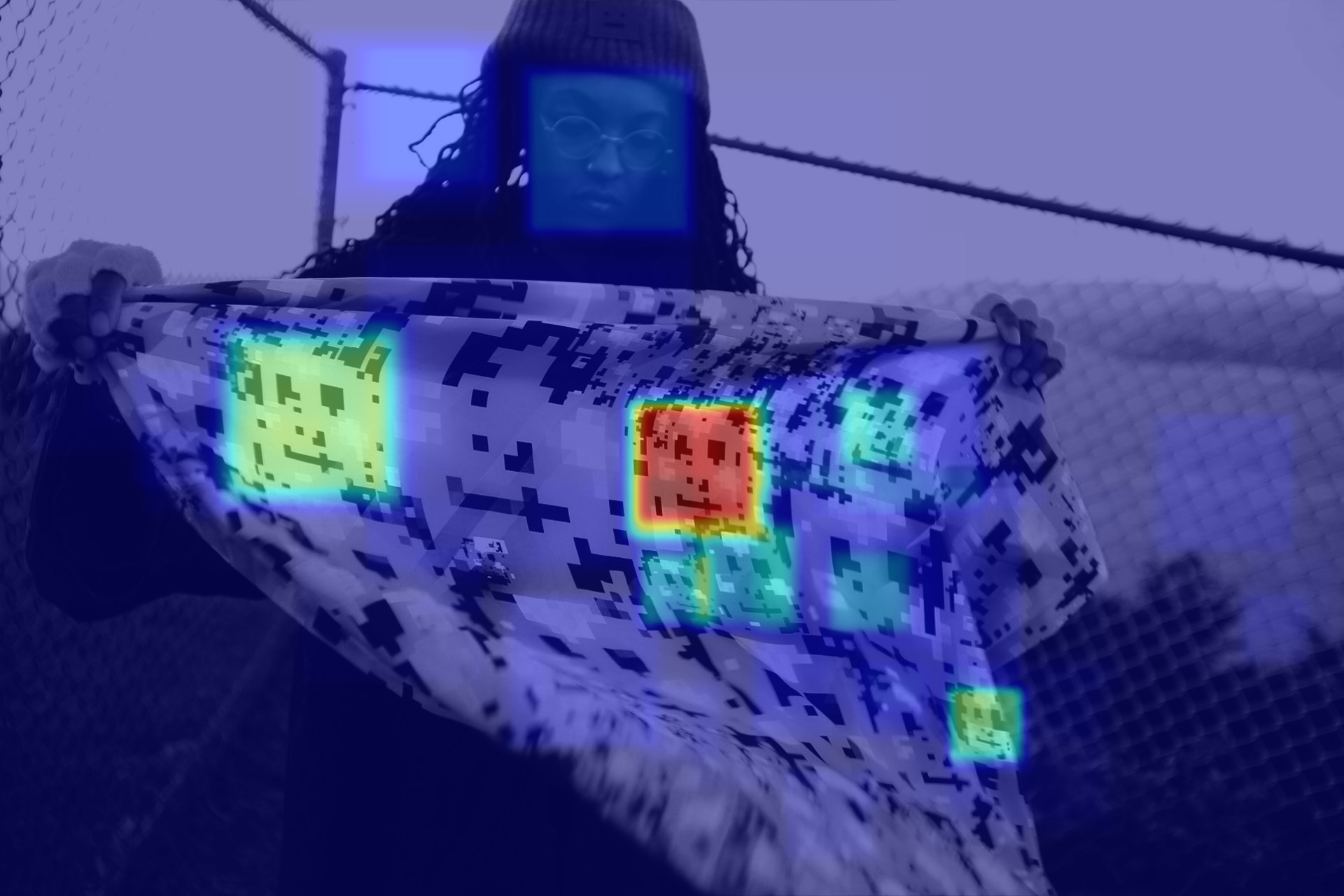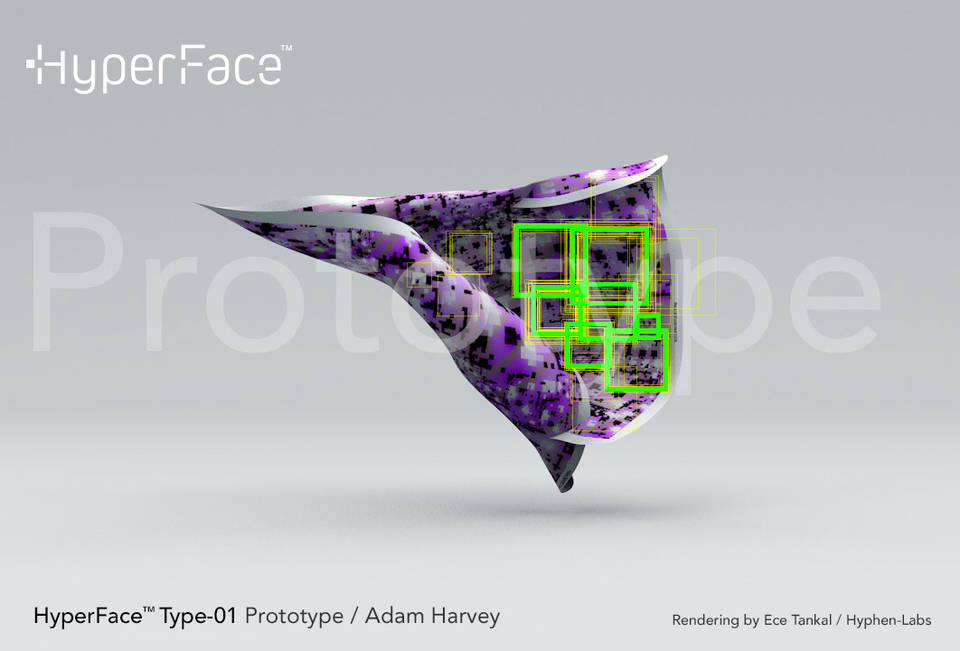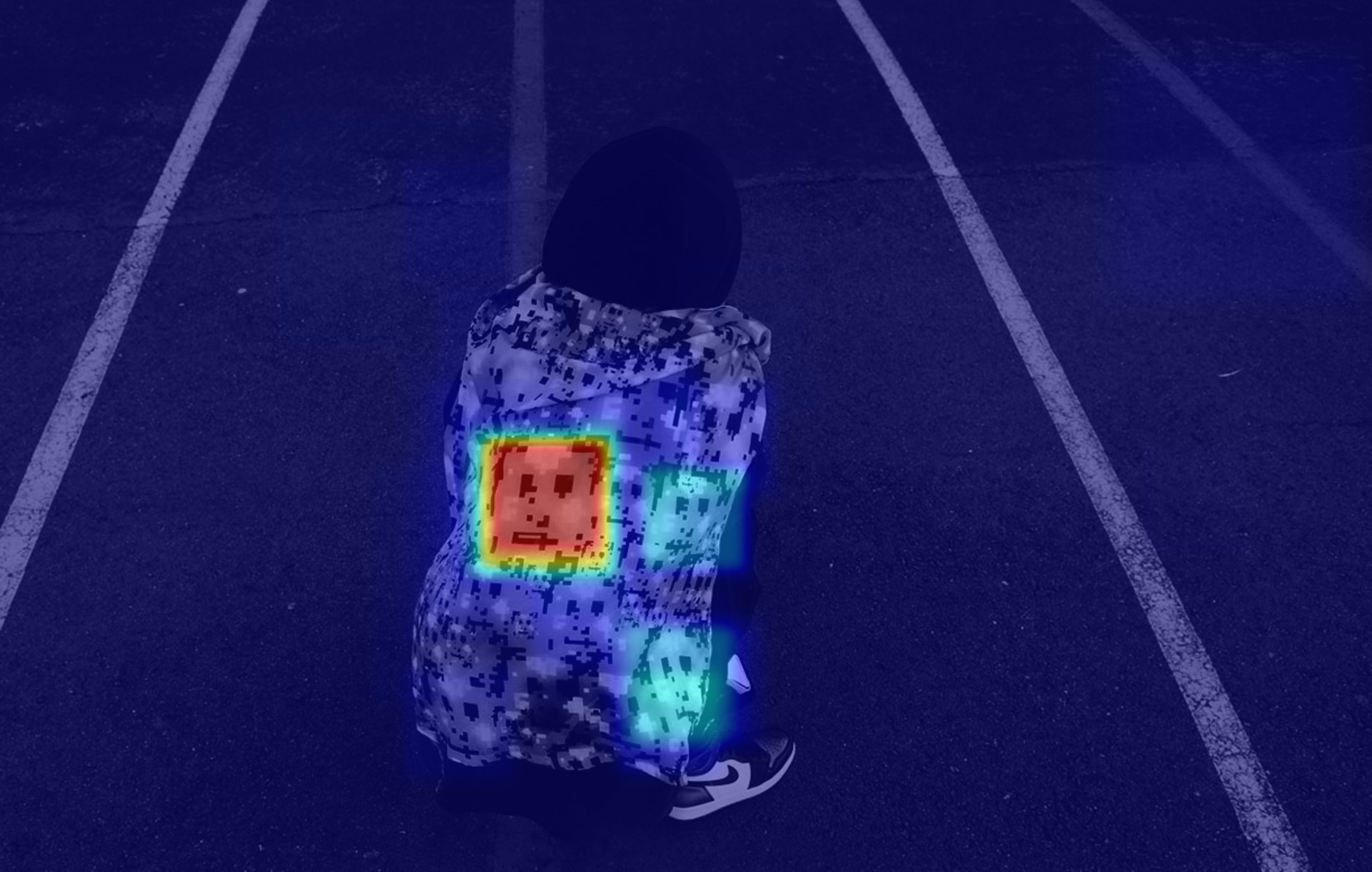
HyperFace by Adam Harvey for Hyphen-Labs. Model: Ashley Baccus-Clark. Photo: © Hyphen-Labs and Adam Harvey / hyphen-labs.com. 2017
HyperFace #
False-face computer vision camouflage patterns designed and developed for Hyphen Labs’ NeuroSpeculative AfroFeminism at Sundance Film Festival 2017.
Adam Harvey x Hyphen-Labs #
The HyperFace (Version 1) prototype was developed for Hyphen-Labs NeuroSpeculative AfroFeminism project and debuted at the Sundance Film Festival in 2017. The project was collaboration with Hyphen Labs members Ashley Baccus-Clark, Carmen Aguilar y Wedge, Ece Tankal, Nitzan Bartov, and JB Rubinovitz.

HyperFace by Adam Harvey for Hyphen-Labs. Rendering by Ece Tankal / hyphen-labs.com. 2017
NeuroSpeculative AfroFeminism is a transmedia exploration of black women and the roles they play in technology, society and culture—including speculative products, immersive experiences and neurocognitive impact research. Using fashion, cosmetics and the economy of beauty as entry points, the project illuminates issues of privacy, transparency, identity and perception.
HyperFace is a new kind of camouflage that aims to reduce the confidence score of facial detection and recognition by providing false faces that distract computer vision algorithms. HyperFace development began in 2013 and was first presented at 33c3 in Hamburg, Germany on December 30th, 2016. HyperFace will launched as a textile print at Sundance Film Festival on January 16, 2017.
Together HyperFace and NeuroSpeculative AfroFeminism explored an Afrocentric countersurveillance aesthetic.

HyperFace by Adam Harvey for Hyphen-Labs. Saliency visualization. Model: Ashley Baccus-Clark. Photo: © Hyphen-Labs and Adam Harvey / hyphen-labs.com. 2017

HyperFace by Adam Harvey for Hyphen-Labs. Saliency visualization. Model: Ashley Baccus-Clark. Photo: © Hyphen-Labs and Adam Harvey / hyphen-labs.com. 2017
How Does HyperFace Work? #
HyperFace works by providing maximally activated false faces based on ideal algorithmic representations of a human face. These maximal activations are targeted for specific algorithms. The prototype above is specific to OpenCV’s default frontalface profile. Other patterns can target convolutional neural networks or HoG/SVM-based edge detectors.
The technical concept is an extension of earlier work on CV Dazzle. However, the difference between the two projects is that HyperFace aims to alter the surrounding area (ground) while CV Dazzle targets the facial area (figure).
In camouflage, the objective is often to minimize the difference between figure and ground. HyperFace reduces the confidence score of the true face (figure) by redirecting more attention to the nearby false face regions (ground).
Conceptually, HyperFace recognizes that completely concealing a face to facial detection algorithms remains a technical and aesthetic challenge. Instead of seeking computer vision anonymity through minimizing the confidence score of a true face (i.e. CV Dazzle), HyperFace offers a higher confidence score for a nearby false face by exploiting a common algorithmic preference for the highest confidence facial region (i.e. use largest face). In other words, if a computer vision algorithm is expecting a face, exploit its expectations.
The example image below shows a saliency (attention) visualization of how the face detector is misled by the false-faces. Compared to the fake face, the detection probably of the model is low and would be ignored using the typical haarcascade detection configuration (scale, overlaps, min/max window size). This test image proves the functional capacity of HyperFace.

HyperFace by Adam Harvey for Hyphen-Labs. Model: Ashley Baccus-Clark. Photo: © Hyphen-Labs and Adam Harvey / hyphen-labs.com. 2017
How Well Does This Work? #
The simplest method is to visualize the number of false-faces detected. The parameters for scale factor, min/max size, and canny thresholding should be tuned to your specific application domain.
The comparison below shows all true face (thick green border) and possible faces (thin green border), also known 0-overlap scores. In this result, the scale factor was reduced to 1.05 and the minimum size to 24 (the absolute minimum) since the scarf includes small false-faces. The image shows that the false faces can trigger “true face” detections in the face detection, exploiting the vulnerability of the low-resolution CCTV-style imagery used in the training dataset.
In technical terms, HyperFace is a computer vision camouflage that exploits the low-dimensionality of the low-resolution grayscale face image training dataset used to train haarcascade profiles. It works because the profiles were used universally. Breaking one profile meant breaking the profile everywhere because all CV systems relied on the same, vulnerable face detection profile. This is no longer true for DCNN-baesd face detection system.

HyperFace saliency map. Scarf rendering by Ece Tankal / hyphen-labs.com. 2017

Haarcascade face detection output on HyperFace pattern. Many “faces” are detected but none exist. © Adam Harvey 2017
Fact Check #
- HyperFace is not for sale, anywhere.
- HyperFace will not make you invisible.
- If you see a face detection decoy product called HyperFace for sale it is 100% fake and is a ripoff.
- If you bought a HyperFace anywhere, it was a hustle. I have never sold any product with HyperFace designs printed on it.
- Displayed patterns are only applicable to the Viola-Jones Haar Cascade algorithm. They are not designed to work, nor have they been tested against any other algorithm. The design was created in 2015, before neural networks were as widely used as they are today.
- The HyperFace pattern and the HyperFace art project were designed and developed by Adam Harvey for Hyphen-Labs in 2015 and first released in 2016.
- Please credit scarf rendering prototype as “HyperFace rendering by Ece Tankal / hyphen-labs.com”
- The HyperFace pattern was not sold because its value as camouflage was temporary and has now passed. Camouflage, in general, should be considered temporary, but especially technical camouflage that targets quickly evolving algorithms.